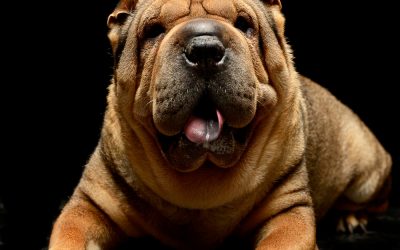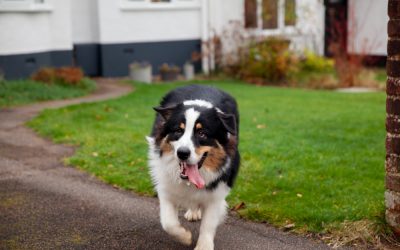Must-Know Safety Tips for Halloween Pet Costumes

Dressing up pets for Halloween is a fun way to get them in on the celebration, but as pet parents, we need to be mindful of ways to keep them safe. Our pets’ comfort and safety should always come first when choosing a costume. While these outfits can add extra fun to the holiday, there are a few risks to be aware of. By following a few simple safety tips, you can ensure your pet has a great, stress-free time, whether they’re out trick-or-treating or just hanging out at home.
The Importance of Ensuring Pet Safety During Halloween
Halloween can be chaotic for pets. There will be constant doorbell ringing, strangers in costumes, and strange sights and sounds. A costume in this already stimulating environment may stress our furry companions.
Keeping pets safe during Halloween goes beyond selecting the right costume. It means creating a safe, comfy space for our pets. With the proper precautions, we can keep our pets happy, healthy, and stress-free during the holidays.
Follow these guidelines to ensure your pet has a positive experience this Halloween.
Common Dangers Associated With Pet Costumes
- Choking Hazards: Curious pets may choke on the costume’s loose threads, small parts, or decorations if they ingest them.
- Restricted Movement: Costumes that are too tight can impede movement, causing discomfort, injury, or breathing trouble.
- Overheating: Some heavy costumes can cause pets to overheat, risking their health.
- Entanglement: Costumes with loose strings or ribbons can tangle with pets’ limbs or collars, posing a strangulation risk.
- Allergic Reactions: Some materials or dyes in pet costumes may trigger allergic reactions in sensitive pets and cause skin irritation or breathing problems.
Choosing the Right Pet Costume
Factors To Consider
- Size and Fit: Measure your pet accurately and opt for a costume that fits snugly but does not restrict movement or breathing. Costumes that are too tight or loose can pose risks of entanglement or tripping hazards.
- Breathability: Choose costumes made from lightweight, breathable materials, allowing air to circulate to prevent overheating.
- Visibility: Choose costumes with reflective or bright elements to ensure your pet’s visibility, especially in low light or outdoors.
- Safety Features: Select costumes with secure fastenings, like Velcro or Snaps, to prevent choking hazards from accidental detachment.
- Comfort: Consider your pet’s personality and preferences; some pets may be more receptive to costumes than others.
Proper Fit and Comfort
- Measure Accurately: Measure your pet’s body—length, girth, and neck circumference to ensure a proper fit. A snug but non-restrictive costume is ideal.
- Trial Run: Let your pet try on the costume briefly before any event. Observe their body language and behavior to see if they’re comfortable or distressed.
- Adjust as Needed: Adjust the straps or consider a different size if the costume is too tight or loose. Ensure it does not restrict movement or pose risks like entanglement or tripping.
Safety and Additional Considerations
- Breathability: Opt for lightweight and breathable materials to prevent your pet from overheating. Costumes should allow air circulation, especially for active pets.
- Monitor Temperature: Keep an eye on your pet’s body temperature while wearing the costume. If they seem too warm or start panting, remove the costume and give them a cool, comfortable place to rest.
- Visibility: Choose costumes with reflective or bright elements to enhance your pet’s visibility, especially in low-light conditions or when outdoors.
- Safety Features: Select costumes with secure fastenings like Velcro or snaps to prevent choking hazards or accidental detachment.
Respect Your Pet’s Limits
- Comfort and Preferences: Consider your pet’s personality: Some pets enjoy costumes, while others may not. If your pet appears uncomfortable or tries to remove the costume, take it off and allow them to relax.
Supervision and Monitoring During Costume Wearing
- Constant Supervision: Never leave your pet unattended while they are wearing a costume. Supervision of your pet will prevent entanglement, ingestion of loose parts, and distress.
- Monitor Behavior: Watch your pet’s behavior and body language in the costume. Look for signs of discomfort, such as panting, pacing, trying to remove the costume, or showing anxiety.
- Regular Breaks: Give your pet regular breaks from the costume, especially if they seem to be overheating or getting agitated. Allow them to rest and cool down in a comfortable, costume-free environment.
- Hydration and Cooling: Give your pet fresh water and a cool, ventilated resting place. Costumes can raise body temperature, so pets need chances to cool down. Adjust or remove the costume if your pet is distressed despite your efforts to calm them.
- Emergency Preparedness: Keep scissors or a safety release mechanism available to quickly remove the costume if your pet gets stuck.
How Can Pet Insurance Help You if Your Dog Needs a Treatment During Halloween?
Pet insurance can be a valuable tool in managing the costs of treating a dog’s veterinary expenses. By having a pet insurance policy in place, you can have peace of mind knowing that you can provide medical care for your furry companion without worrying about the financial burden. Pet insurance can help cover the costs of veterinary consultations, diagnostic tests, medications, and even specialized treatments if required.
Reimbursement
This method is the most common for pet insurance companies. You pay out of pocket for the veterinarian bill, and then the insurance company reimburses you for what’s covered under the insurance plan. The steps look like this.
- You pay the vet bill after your dog’s visit.
- You fill out the pet insurance claim form.
- Submit the claim form and other required documentation to the insurer.
- After the claim is approved, you will be reimbursed for eligible expenses.
What Does Odie Pet Insurance Cover?
Pet insurance covers various veterinary expenses, providing financial protection and peace of mind for pet owners. Here are the details of the coverage options offered by Odie Pet Insurance:
Illness & Injury Plan
The Illness & Injury Plan is an all-inclusive insurance plan designed to cover a wide range of medical needs for your pet. This plan includes comprehensive coverage for various illnesses, injuries, and veterinary services. Some of the covered items include:
- Veterinary exams and consultations
- Diagnostics (e.g., X-rays, lab tests)
- Prescribed medications
- Surgeries and hospitalization
- Rehabilitation, acupuncture, or chiropractic treatments
- Medically necessary supplies
- Euthanasia and cremation
The Wellness Plan
The Wellness Plan is a monthly membership that focuses on preventive care and covers routine veterinary services.
- Provides reimbursements for routine care items such as wellness visits (exams and vaccines), testing and parasite prevention, dental cleanings and at-home dental care, vitamins, supplements, and more.
- Through Odie’s partnership with Petivity, a leader in smart pet products and proactive care, Wellness Plan members can also receive reimbursements for Petivity devices and health kits, as well as eligible Purina food and supplements.
- Total reimbursement up to $700 per year.




